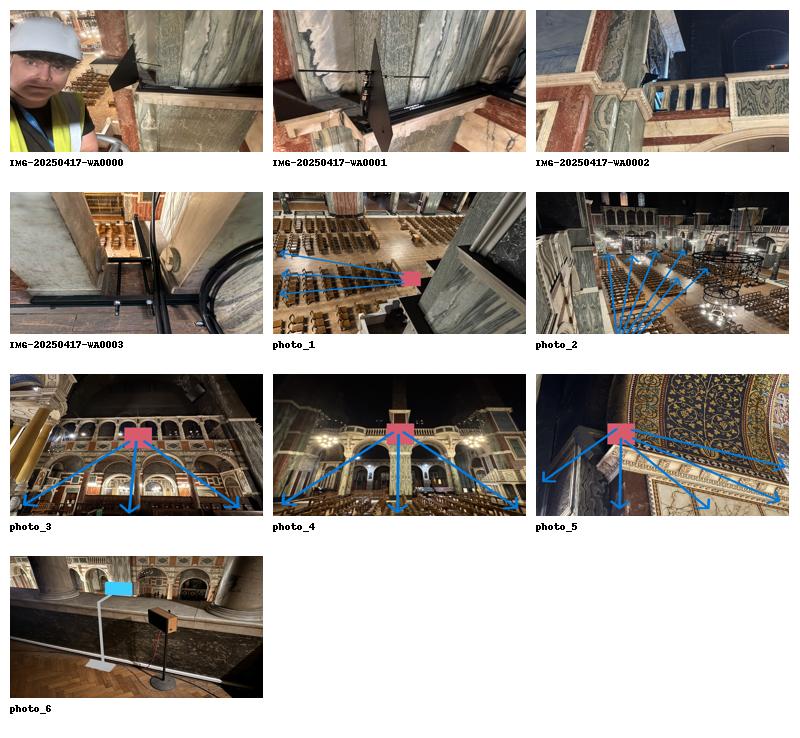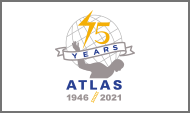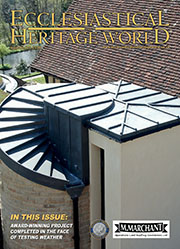Antenna reinforcement installation
Antenna reinforcement installation - The design will not only provide the ability to operate their radio microphones from the main West Door location, but also improve the coverage throughout key points of the cathedral, including the Lady Chapel and will replace their somewhat temporary existing antenna installation, not only improving performance, but also aesthetics (less equipment visible). Coverage is also required in the Lady Chapel area, not only so the radio microphones can work through the main PA system, but also, a future requirement where these existing radio microphones can be routed to the stand-alone Lady Chapel PA system. This will maximise their return on investment, since there will not be a need to purchase another set of radio microphones just for the occasional use in this area [Lady Chapel]
Radio frequencies in the 600-700Mhz range are highly directional and are easily attenuated by large objects such as pillars and other building structures. It is very important that antennas have a clear line-of-sight to the radio microphone transmitter, therefore satisfactory coverage of such a building with a single antenna array is rarely possible. In addition, as the frequency goes up, so do losses in the coax cable connecting the antennas to the receiver. The type of antenna, location and distance from receiver, are a careful balancing act to ensure losses in the system are kept to a minimum. Simply extending the coax cabling 100 meters to an antenna right besides the West Door say, will result in large losses and also not provide seamless coverage in the main areas as detailed in this document. A very high quality low-loss coax cable (expensive!) such as LMR 400 will still be required due to the distances involved.
Each antennas specified work on the mixed polarisation diversity principle, therefore will require 2 feeds of coax back to the main system rack.
- For coverage down to the West Door and up the main isle, an RF Venue Diversity Fin antenna will be positioned at [photo_1,jpg] location. This antenna will have a pickup area detailed in [photo_2.jpg]. A custom-made bracket will facilitate this antenna being discreetly mounted so it has a clear line-of-sight to the areas of interest. There will be approximately a 2x 50m run of coax needed and a pair of RF Venue In-Line Amplifiers will be required to take into account cable losses.
- For coverage in the area ahead of the above antenna and in front of the steps area, an RF Venue Diversity Architectural Antenna will provide an 180 deg omnidirectional coverage of the area, as the distance from microphone transmitter to antenna is a lot less. [photo_4.jpg]
- For coverage around the alter and choir stalls area, another RF Venue Diversity Architectural Antenna will provide an 180 deg omnidirectional coverage of the area, as the distance from microphone transmitter to antenna is a lot less.[photo_3.jpg]. A custom metal mounting bracket and plate will be fabricated so that the antenna can be supported from the wooden floor and "look over" the marble rail, since we are not allowed to mount anything directly to this marble rail! [photo_6.jpg]
- For coverage in the Lady Chapel area, another RF Venue Diversity Architectural Antenna mounted high up next to the loudspeaker. [photo_5.jpg]
These four diversity antenna systems will be combined into a single diversity output by an RF Venue 4 Zone and the output fed into the Cathedrals existing RF distribution amplifier. The RF Venue 4 Zone will be mounted in the main PA rack up at the balcony besides the exiting radio microphone equipment. Carry out a detailed RF analysis involving a spectrum analyser once the system is installed, to ensure that it meets the coverage requirements in the areas detailed.
The Cathedral installation was carried out, tested performance with team on site which they were very happy with, Radio mic signals are now rock solid throughout the Cathedral - including in areas where coverage requirement was not originally specified. Mics can even now be taken outside the West Door onto the steps where the receiver still registers a full signal strength. The signal picked up by antenna 4 (the fin firing down the Cathedral) was so strong that we have had to program in a few dBs of attenuation on the 4Zone combiner so as not to overload the receiver. Also attended Easter service on Friday to witness performance, which was solid for the whole system throughout. Took around 10 signal and 19 RF spectrum measurements around the Cathedral alongside Chris to demonstrate wholeness of performance from the system. Also to note that audio distortion from Radio Mics appears to have disappeared suspect due to weak signals and digital receivers struggling to error correct.
With regards to the 6 monthly maintenance, this is what is involved:
Description of Services:
- Carry out planned audio system maintenance on mutually convenient dates/times, first visit prior to Palm Sunday and second before the First Sunday of Advent.
- Inspect all items of equipment within the equipment rack and test for correct operation and functionality
- Check the interior of the equipment rack for cleanliness, taking high levels of dust accumulation in the cathedral into account – dismantle and clean where necessary
- Inspect each of the installed loudspeakers for condition and functionality. Periodically test intelligibility (Sti) using calibrated test equipment
- Inspect and test the radio microphone receivers for condition and functionality
- Inspect the wired microphones and cables for condition and functionality
- Inspect the beltpack radio transmitters for condition and functionality
- Test all aspects of the overall system as required by the Cathedral custodians including electrical safety of the system
- Check the settings of the microphone mixer and digital signal processor
- Test the induction loop system for the hard of hearing for correct functionality and accordance with prevailing requirements in respect of the Disability Discrimination Act
- Using Computerised Smart real time analyser test system equalization and other crucial parameters to ensure maximum gain before feedback etc where necessary
- Consult with staff and clergy to ensure that all is in order
- Respond to reports of suspected faults and to be available by telephone and email
- Two emergency attendances provided within the contract period during working hours (Monday – Friday, 08:30 – 17:30 excluding bank holidays).














